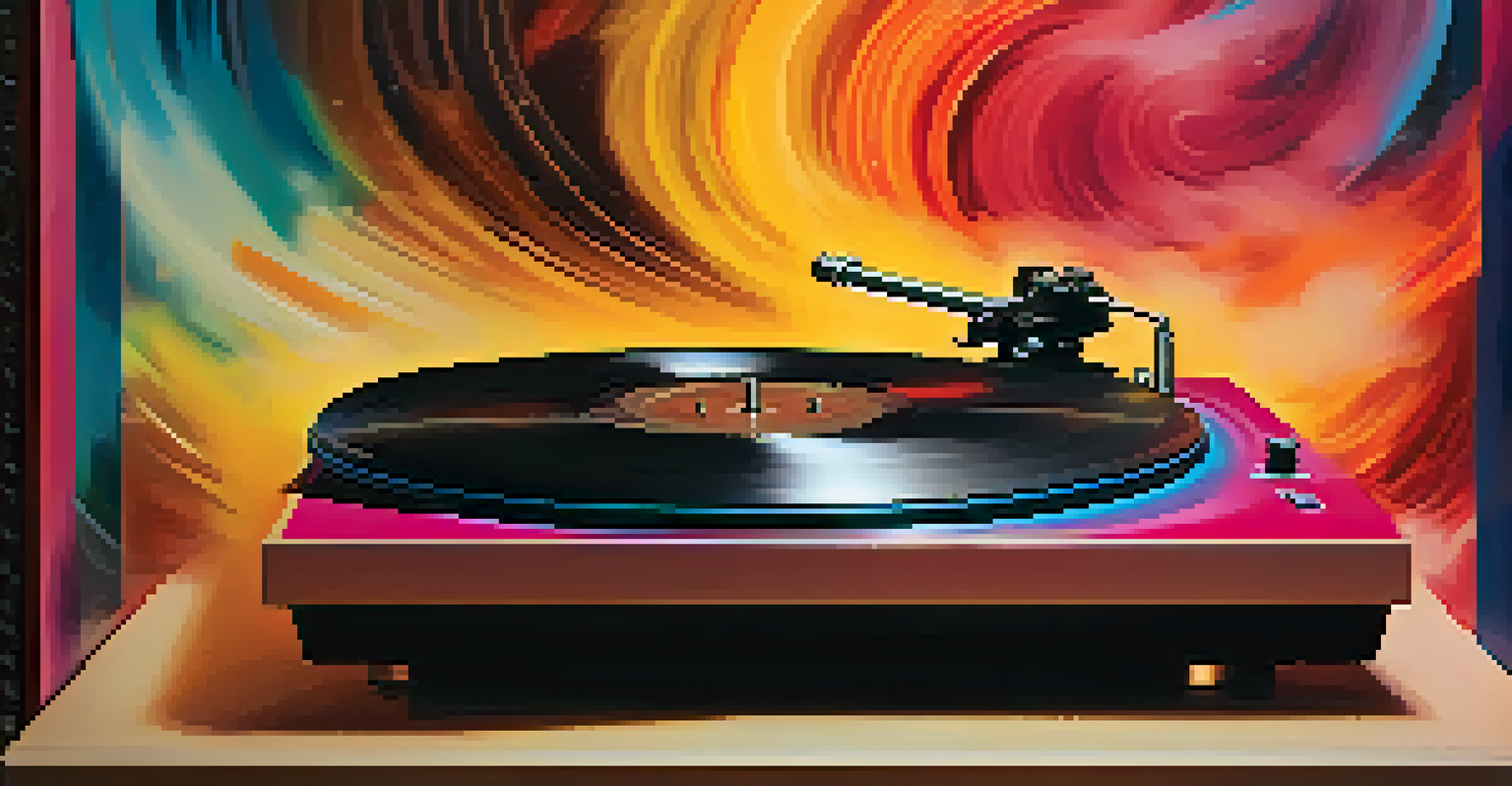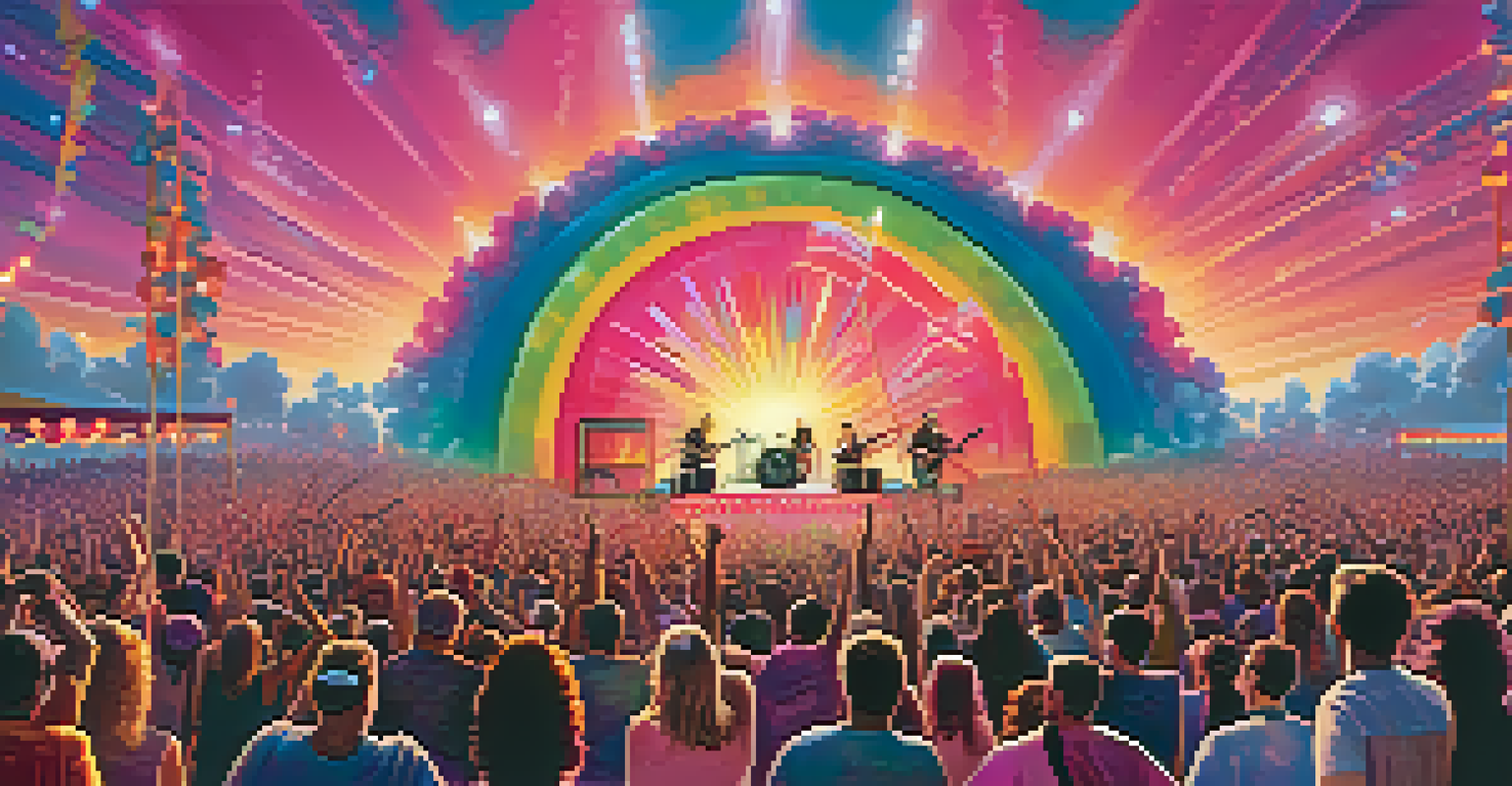The Rise of LSD: A 20th Century Cultural Phenomenon

LSD's Origins: From Discovery to Popularity
LSD, or lysergic acid diethylamide, was first synthesized in 1938 by Swiss chemist Albert Hofmann. Originally created as a potential treatment for various ailments, its psychoactive properties were not discovered until Hofmann accidentally ingested it in 1943. This pivotal moment marked the beginning of LSD's journey into the cultural landscape of the 20th century.
I think that LSD is a really important tool for understanding ourselves and the universe. It opens the door for a new way of thinking.
The 1960s saw a surge in interest as figures like Timothy Leary began to advocate for its use in expanding consciousness. Leary's famous phrase, 'Turn on, tune in, drop out,' encapsulated the counterculture movement's embrace of LSD as a tool for self-exploration and rebellion against societal norms. This period marked a significant shift in how people viewed consciousness and mental health.
As LSD gained popularity, it became associated with influential cultural movements, particularly in the realms of music and art. Iconic bands like The Grateful Dead and The Beatles openly incorporated LSD into their creative processes, leading to a vibrant explosion of psychedelic art and music that defined the era.
LSD and the Counterculture Movement
The counterculture movement of the 1960s was characterized by a rejection of traditional values and a quest for alternative lifestyles. LSD became a cornerstone of this movement, symbolizing freedom and exploration. Its use at music festivals and communal gatherings fostered a sense of unity among those seeking new experiences.

Many artists, writers, and thinkers turned to LSD as a means to unlock creativity and challenge conventional boundaries. This led to a flourishing of innovative art forms, from vibrant psychedelic posters to experimental literature exploring altered states of consciousness. The cultural revolution was palpable, with LSD at the heart of it.
LSD's Cultural Impact and Roots
LSD transitioned from a scientific discovery to a cornerstone of the 1960s counterculture, symbolizing exploration and rebellion.
However, the increasing prevalence of LSD also raised concerns among authorities, leading to a backlash against its use. As stories of bad trips and tragic incidents began to surface, the government took action, culminating in the criminalization of LSD in the late 1960s. This shift marked the beginning of a complex relationship between society and psychedelics.
The Scientific Exploration of LSD
While LSD became a cultural phenomenon, its potential therapeutic benefits were also being explored in the scientific community. Researchers in the 1950s and 1960s investigated its use in treating mental health disorders such as depression and anxiety. These studies provided intriguing insights into the mind and opened up new avenues for psychological research.
Psychedelics are a way to go beyond the normal boundaries of consciousness and understand the profound experiences of our existence.
Despite the eventual prohibition of LSD, interest in its therapeutic potential has resurfaced in recent years. Modern studies are revisiting the drug's ability to facilitate profound psychological breakthroughs, particularly in controlled settings. This renewed focus reflects a broader trend towards integrating psychedelics into mental health treatment.
The juxtaposition of LSD as both a cultural icon and a subject of scientific inquiry highlights its multifaceted nature. As we continue to explore its impacts, we are reminded of the delicate balance between the pursuit of knowledge and societal perceptions.
LSD in Art and Music: A Creative Catalyst
LSD's influence on art and music cannot be overstated. Many artists found that the drug enhanced their creative processes, allowing them to see the world through a different lens. This led to the emergence of vibrant artwork characterized by swirling colors and abstract forms, a visual representation of the psychedelic experience.
Musicians, too, embraced LSD, using it to push the boundaries of their sound. Albums like 'Sgt. Pepper's Lonely Hearts Club Band' by The Beatles showcased the drug's impact on songwriting and production techniques, blending genres and experimenting with unconventional structures. The music of this era often aimed to evoke the euphoric and mind-expanding feelings associated with psychedelics.
Therapeutic Potential of LSD
Recent research is revisiting LSD's potential in treating mental health disorders, highlighting its therapeutic applications in controlled settings.
Psychedelic culture extended beyond just music and visual art; it influenced fashion, literature, and even philosophy. The quest for deeper meaning and connectivity resonated through various forms of expression, marking a distinctive shift in the cultural landscape that still echoes today.
The Dark Side of LSD: Risks and Consequences
While LSD was heralded by many as a tool for enlightenment, it also came with risks. Some users experienced adverse effects, including anxiety, paranoia, and psychosis, especially in uncontrolled environments. These negative experiences contributed to growing concerns about the safety of the drug and its potential for misuse.
The darker side of LSD played a significant role in shaping public perception. As sensationalized stories of 'bad trips' circulated in media, the drug became stigmatized, leading to a backlash against the counterculture movement. This shift in perception ultimately contributed to its classification as a Schedule I substance in the U.S.
The consequences of this classification were profound, as it stifled further research into potential therapeutic applications. The cautionary tales surrounding LSD continue to influence discussions about drug policy and mental health treatment today, reminding us of the complexities surrounding psychedelics.
The Revival of Psychedelic Research
In recent years, there has been a resurgence of interest in psychedelic substances, including LSD, within the scientific community. Researchers are increasingly exploring their therapeutic potential, particularly in treating conditions like PTSD, depression, and substance abuse disorders. This revival marks a significant shift in the perception of psychedelics from recreational drugs to potential medical treatments.
Clinical trials are being conducted to assess the efficacy and safety of LSD-assisted therapy, with promising results. These studies often emphasize the importance of set and setting, highlighting how the environment and mindset can influence the experience. This nuanced approach seeks to mitigate risks while maximizing therapeutic benefits.
Risks and Societal Perception
Despite its benefits, LSD's association with negative experiences and public backlash led to its stigmatization and classification as a Schedule I substance.
As we move forward, the conversation around LSD is evolving. The combination of scientific inquiry and cultural nostalgia has sparked renewed interest, suggesting that the lessons of the past can inform future applications of these powerful substances.
The Future of LSD: Cultural Reflections and Beyond
As we reflect on the cultural phenomenon of LSD, it's clear that its impact extends far beyond the 20th century. The drug has become a symbol of exploration, creativity, and the quest for understanding the human mind. Today's conversations around mental health and well-being are increasingly incorporating the lessons learned from the psychedelic era.
The ongoing research into LSD and other psychedelics is paving the way for a new understanding of mental health treatment, emphasizing the importance of holistic approaches. This shift is encouraging a more open dialogue about the potential benefits and risks associated with these substances, moving towards a more informed perspective.

Ultimately, the rise of LSD as a cultural phenomenon serves as a reminder of our collective journey to explore consciousness. As society continues to navigate the complexities of mental health and personal exploration, the legacy of LSD remains relevant, challenging us to reconsider our relationship with the mind and the substances that influence it.